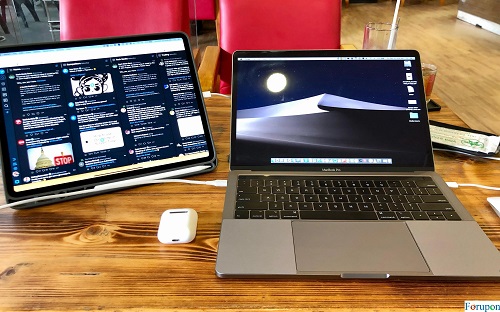Why Always-On Doesn’t Cut It Anymore
Content Creation: Brands must stop broadcasting on their terms and start to think user-first
We are drowning.
From ads to content marketing and everything in between, we are drowning in a sea of branded messaging that is almost impossible to keep up with.
Why?
Because, in an attempt to stand out from the competition, brands have adopted an ‘Always-On’ communications strategy that believes that the more often you can get in front of your audience, the better.
In this article we argue that brands must move away from this ‘Always-On’, brand-first, pushed messaging style to what we’re calling an ‘Always-There‘ approach: creating content that is relevant and well placed for the audience to naturally discover on their own terms. Content that is, quite literally, always there when the user wants it.
What’s wrong with ‘Always-On’?
In amongst the content swamp, and partly the cause of it, is a quoted desire of so many brands to exercise an ‘Always-On’ content strategy, to quite literally create and distribute content all of the time.
The trouble with this form of messaging is that it ultimately still remains unwanted and unrequested from the user’s perspective.
“I haven’t asked for this content, so why are you shoving it in my face? At least before I only had your TV ads to deal with (which I can now thankfully avoid) but now I’ve got you appearing in my all my social media feeds, on my desktop and mobile platforms, getting in the way of the content I am actually trying to reach!”
In other words, an ‘Always-On’ strategy is still one that is derived from the brand’s perspective and not the user’s. It is still a push strategy.
Brands need to prove their worth
Today, brands need to provide a compelling reason for consumers to engage. If they don’t, then there are plenty of other brands for their audience to turn to.
Those brands doing it right understand that their customers are struggling to wade through the content swamp that meets them from the moment they first check their feeds in the morning until the hour they spend checking their phones before they attempt to go to sleep at night.
Culturally, what has changed now is that, rather than waiting for a brand to shove yet another unwanted message down their throats, consumers will discover and gladly revisit and remain loyal to those brands they choose to engage with and filter out or simply ignore those they don’t.
Brand interaction today is facilitated on the user’s terms, allowing them to choose what they want to see, when they want to see it, and the platforms and devices they want to see it on.
What do we mean by ‘Always-There’?
‘Always-There’ is a brand communications approach that involves creating content that is of real relevance to a brand’s customers, adding value in some way to their lives, and then allowing those customers to naturally discover it and actively seek it out. It then becomes desired content instead of interruptive content.
8 steps to creating an ‘Always-There’ strategy
So, how do brands begin to think about their content creation strategies from a user-first, ‘Always-There’ perspective? Here are eight key points every brand should consider:
- Say it because you mean it. Create content that means something to your brand.
- Be relevant. If the content means something to the reader, they will engage.
- Be timely and reactive. The right content, in the right place, in the right format, at the right time.
- Don’t interrupt. Upset your users and you’ve lost them forever.
- Be regular. If you start and you’re successful then users will hunger for more.
- Don’t give up. If you’re not successful at first, keep trying.
- Learn and evolve. Ensure that the leanings from each piece of content inform subsequent releases.
- Start a conversation. Be prepared to get a reaction and learn how (or if) to respond.
This article was first published here.


Comments are closed.